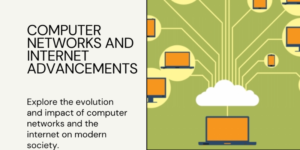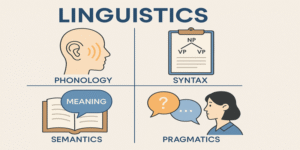Selecting a research topic is a crucial first step in the research process. The choice of a well-suited research topic lays the foundation for a successful research project. Without a solid topic, the research may lack focus or direction, resulting in a study that does not effectively contribute to the academic field. However, generating research ideas can be challenging, especially for those who are new to research or are venturing into a new field of study. This article outlines various techniques for generating research ideas, categorised into two main approaches: rational thinking and creative thinking. These methods help researchers narrow down broad interests into specific research questions that are both feasible and valuable.
1.0 Rational Thinking Approaches
Rational thinking involves a systematic, logical, and analytical approach to identifying research topics. This method is often grounded in prior knowledge, past experiences, and existing literature. It helps researchers use structured reasoning to refine their ideas into workable research questions.
a) Examining Your Own Strengths and Interests
One of the most straightforward ways to select a research topic is by aligning it with your personal strengths and interests. Choosing a topic that resonates with your expertise and passion not only makes the research process more enjoyable but also improves the likelihood of producing high-quality work. When researchers are personally invested in their topics, they are more motivated to engage deeply with the subject, leading to more thorough and insightful analyses. As Saunders et al. (2015) suggest, reflecting on your strengths can lead to a more focused and motivated research experience, ensuring that the topic aligns with your academic or professional background.
b) Examining Others’ Research Interests
Consulting with colleagues, lecturers, friends, and family members can provide invaluable input. Others may have insights into current trends, new technologies, or emerging fields that you may not have considered. Additionally, they may point out existing gaps in research or suggest topics that align with ongoing projects or institutional research priorities. By engaging with others, you can generate ideas that are not only personally interesting but also relevant to the broader academic community or industry. This can increase the impact and significance of your research.
c) Looking at Past Project Titles
Reviewing previous research projects, such as dissertations, theses, or published journal articles, can be a valuable source of inspiration. Past project titles often highlight trends, gaps, and opportunities in your field. This method helps you avoid duplicating past work and ensures that your research contributes new knowledge. By studying past research, you can identify areas that have been over-explored as well as those that require further investigation, guiding you toward a novel and impactful research topic.
d) Discussion
Engaging in discussions with peers, mentors, and experts in your field can stimulate new ideas and perspectives. These conversations often help clarify thoughts, challenge assumptions, and generate research questions that you may not have considered on your own. Saunders et al. (2015) emphasise the importance of dialogue in the research process, as it can lead to the discovery of novel research avenues. Conversations can provide feedback, introduce alternative viewpoints, and guide you in refining your ideas into focused research questions.
e) Searching Existing Literature
Conducting a thorough literature review is a vital step in the research process. By reviewing existing studies, you can identify gaps in knowledge, unresolved questions, and emerging trends. A literature review provides a solid foundation upon which to build your research and ensures that your work is grounded in the existing body of knowledge (Bryman, 2016). This approach allows you to understand the current state of research in your field and identify areas where your study could make a significant contribution. Moreover, reviewing literature helps to frame your research within the theoretical frameworks that are relevant to your topic.
f) Scanning the Media
Staying informed about current events and trends through various media outlets such as newspapers, online articles, television, and social media can inspire research ideas. The media often highlights issues that are relevant, timely, and of public interest, making them excellent sources for identifying research topics with societal impact. This approach ensures that your research is grounded in real-world issues and has the potential to contribute to public discourse or policy changes. Media-driven research topics are often interdisciplinary, addressing issues such as technology, politics, environment, or health, which can resonate with both academic and general audiences.
2.0 Creative Thinking Approaches
Creative thinking involves more divergent and innovative approaches to identifying research topics. These methods encourage researchers to think outside the box and explore unconventional ideas. Creative thinking often leads to unique research questions that stand out from traditional studies.
a) Keeping a Notebook of Your Ideas
Maintaining a notebook to jot down ideas as they come to you is a simple yet effective technique. Research ideas can occur at any time, whether during a lecture, while reading, or in everyday conversations. Keeping a record of these ideas allows you to revisit and refine them later. This method fosters creativity by enabling the collection of a wide range of thoughts that can be developed into research topics over time. It also helps prevent forgetting potential topics that might arise during spontaneous moments of inspiration.
b) Exploring Personal Preferences Using Past Projects
Reflecting on past projects or experiences can provide inspiration for new research topics. This method allows you to build on previous work or explore areas that you found particularly interesting during earlier studies. By connecting past experiences with current research interests, you can develop a unique and personal research agenda. Furthermore, extending previous research can lead to deeper insights into a subject and open up new questions that were not addressed in the original study.
c) Exploring Relevance to Business Using the Literature
For those in fields such as business, management, or economics, linking research topics to practical business problems can be highly beneficial. This approach involves reviewing literature with a focus on identifying areas where academic research can address real-world business challenges. Saunders et al. (2015) suggest that aligning research with practical relevance ensures that the study is not only theoretically sound but also has practical implications for businesses, industries, or markets. This approach increases the likelihood that your research will have an immediate and tangible impact.
d) Relevance Trees
Relevance trees are a visual tool used to map out different aspects of a research problem. This technique involves starting with a broad topic and branching out into subtopics, helping you visualise the various dimensions of the issue. Relevance trees can help you organise your thoughts and identify specific areas of focus within a larger research problem (Bell & Waters, 2018). By breaking down the topic into smaller components, relevance trees make it easier to spot gaps and opportunities for research, leading to more focused and manageable projects.
e) Brainstorming
Brainstorming is a well-known creative technique that encourages free-thinking and the generation of as many ideas as possible without immediate evaluation. This method allows researchers to explore a wide range of possibilities and identify connections between different ideas. Once a list of potential topics is generated, the ideas can be refined and evaluated for feasibility and relevance. Brainstorming is particularly useful in group settings, where multiple perspectives can spark innovative ideas that an individual might not have considered alone.
Choosing a research topic is a pivotal decision that can determine the success of a research project. By employing both rational and creative thinking techniques, researchers can generate ideas that are not only original and interesting but also feasible and valuable. Rational thinking provides a structured approach to narrowing down ideas, while creative thinking encourages innovation and exploration of unconventional research topics. Whether through systematic analysis of past research or creative brainstorming sessions, these techniques provide a structured yet flexible approach to identifying research topics that contribute meaningfully to the academic community and society at large.
References
Bell, J., & Waters, S. (2018) Doing Your Research Project: A Guide for First-Time Researchers. 7th ed. Open University Press.
Bryman, A. (2016) Social Research Methods (5th ed.). Oxford University Press.
Saunders, M., Lewis, P., & Thornhill, A. (2015) Research Methods for Business Students. 7th ed. Pearson Education Limited.









